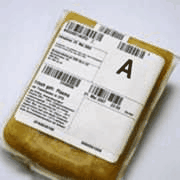Blood Research Study [Closed]
Closure of Blood Research Study
Pragmatic, Randomized Optimal Platelet and Plasma Ratios (PROPPR)
Principal Investigator: Thomas Scalea, MD
R Adams Cowley Shock Trauma Center
University of Maryland Medical Center
22 S. Greene St
Baltimore, MD 21201
Overview

Between August 2012 and December 2013, the Shock Trauma Center participated in a research study involving severely injured patients that needed a large amount of blood as part of their standard, life-saving treatment. The purpose of the PROPPR study was to compare two different methods of blood transfusion to learn which one improves survival. This study is now complete.
Background
Traumatic injuries, like those caused by car accidents or a shooting, are the leading cause of death in people under the age of 45. The main reason for death is losing too much blood. When a patient needs a lot of blood, they can be given a blood transfusion in different combinations. This is because when blood is donated, it is divided into its main active parts (or blood products) of plasma, platelets and red blood cells. There are two blood product combinations that are in widespread use across the United States. One is equal ratios of plasma, platelets and red blood cells; the other is a ratio that has equal numbers of plasma and platelets, but twice as many red blood cells.
Study Procedures
 Patients who needed a very large amount of blood were randomly assigned to one of the two blood product combinations. In all other ways, patients enrolled in the study were given the same high standard of life-saving care. 11,185 patients were screened for the study and 680 were enrolled. 338 patients received 1:1:1 ratios of plasma to platelets to red blood cells and 342 patients received 1:1:2 ratios of plasma to platelets to red blood cells.
Patients who needed a very large amount of blood were randomly assigned to one of the two blood product combinations. In all other ways, patients enrolled in the study were given the same high standard of life-saving care. 11,185 patients were screened for the study and 680 were enrolled. 338 patients received 1:1:1 ratios of plasma to platelets to red blood cells and 342 patients received 1:1:2 ratios of plasma to platelets to red blood cells.
Results
The study found that patients in the 1:1:1 ratio group lived long enough for physicians to stop the bleeding and had a better chance of surviving, in the first 24 hours, compared to patients in the other group. The two groups had the same overall level of survival at 30 days.
Reason for Community Notification
Usually, patients are told ahead of time about a research study so they can provide consent before participating. However, in the case of a severe injury in an emergency, it is often impossible for patients to give consent because they are unconscious or unable to communicate. FDA regulations allow some emergency research studies to be carried out without first obtaining consent, but only under extremely strict conditions. This study met these conditions. The disclosure of these study results are required under the FDA regulations that allow these types of emergency studies to be performed.
People in our community who did not wish to become enrolled in the study were provided a bracelet with the words"[Ø PROPPR]". Anyone in the community wearing these bracelets may discard them at this time.
